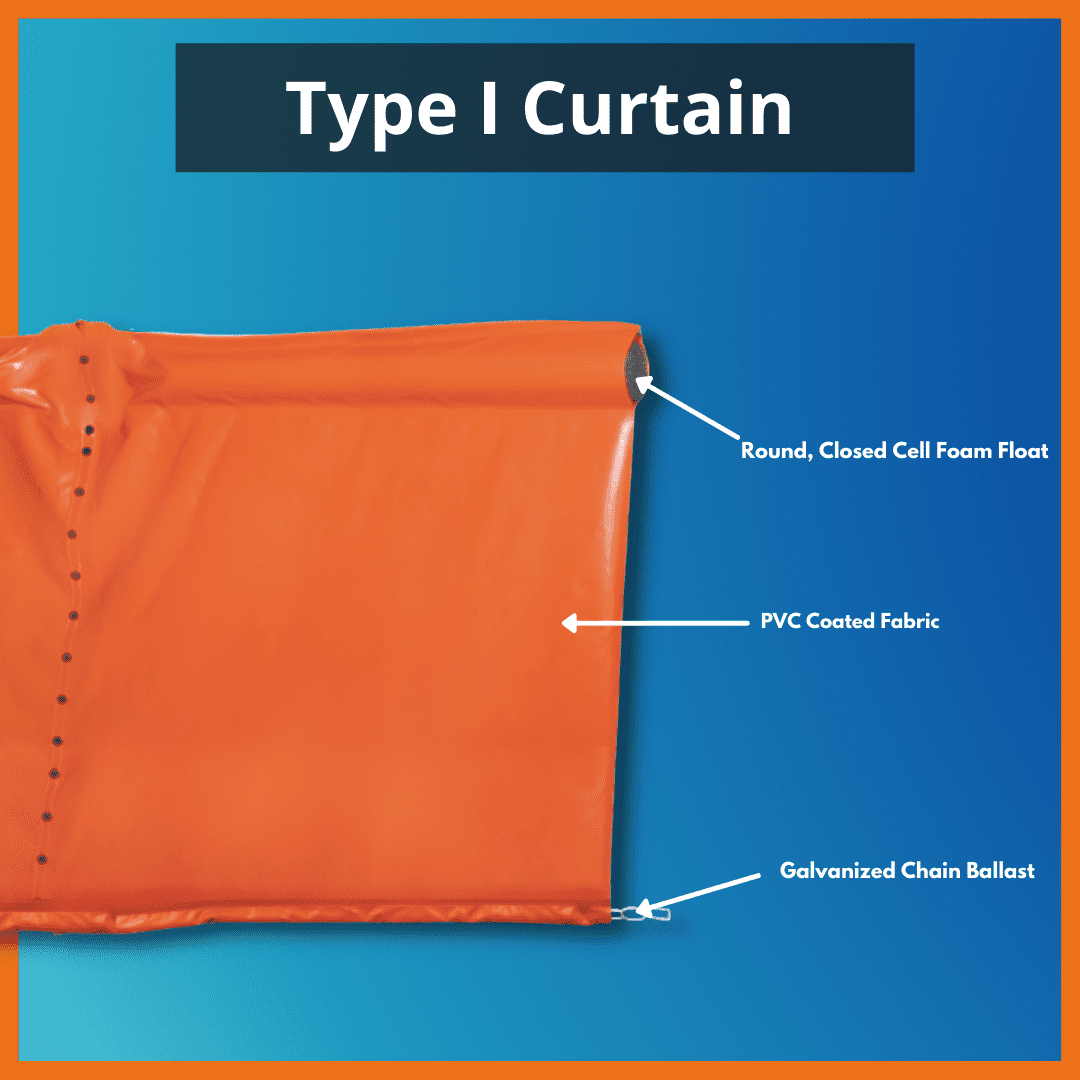The DOT Type I curtain is the base model from which the other three build on. It consists of 18oz, 22oz, or 24oz PVC coated fabric, a solid closed cell foam float, skirt length made to fit your job requirements, and a galvanized chain ballast. There is a strip of 2″ webbing that runs along the length of the skirt on both ends that is punched with #4 grommets every 6″. It is common to use nylon rope to tie this together, ACME also offers toggle pins as an option for this.
Pages
- ACME Services
- Cart
- Checkout
- My account
- Products
- Shop
- Oil Spill Response
- Remediation
- GAC Filtration Trailer
- COVID-19 Disinfection and Decontamination Services
- Training Courses & Boom School
- Home
- Insights
- Catalog
- Privacy Policy
- ACME Boom & Baffle Fabrics
- Request a Quote
- Request Quote – Cranberry Specialty Containment Boom
- Safety Consulting Services – Request Quote
- Request Quote – Kat-fish Korral Containment Boom
- Secondary Containment Berm – Request a Quote
- Super MiniBoom – Request a Quote
- Inflatable Boom – Request Quote
- 4″ Containment Boom – Request Quote
- 6″ Containment Boom – Request Quote
- 8″ Containment Boom – Request Quote
- Request Quote – 10″ Offshore Containment Boom
- Request Quote – 12″ Offshore Containment Boom
- 4″x4″ Cranberry Recovery Boom – Request Quote
- Perma-Boom: 36″ – Request Quote
- Perma-Boom Custom – Request Quote
- Perma-Boom: 18″ – Request Quote
- Perma-Boom: 24″ – Request Quote
- Request Quote – Silt and Turbidity Curtains
- Request Quote – DOT Curtain Type I
- Request Quote – DOT Curtain Type II
- Request Quote – DOT Curtain Type III
- Baffles – Request Quote
- ABBCO Specifications
- Disinfection vs. Decontamination: What’s The Difference?
- Avian Flu Reponse
- Ex-situ Chemical Oxidation
- About Us / Our History
- Contact Us
- Case Studies
- News & Events
- ABBCO Acquisition
- Resources
- Oil Spill Categories
- Oil Spills
- Oil Spill Containment
- Secondary Containment
- Floating Baffles
- Turbidity Curtain
- ACME Hose Floats
- Oil Skimmers
- ACME Fabric Repair Kit
- Power Packs
- Oil Spill Cleanup
- Silt Curtain
- Spill Kits
- Vapor Sock
- Bulkhead Connector
- Oil Booms
- Oil Containment Boom
- Oil Spill Response | Oil Spill Response Organization
- Spill Response Plan
- ACME Toggle Pins | Oil Spill Response Organization
- Oil Spill Glossary
- Oil Spill Supportive Materials & Guides
- Oil Spill Tips
- Oil Spill Facts
- Oil Spill FAQs – Introduction
- Oil Spill Categories
- Search Form
- ACME Radio Frequency Technologies
Archives
Categories
- Brochures (10)
- Products (362)
- ACME Oil Sorbents (41)
- Boom Reels & Power Packs (10)
- Floating Baffles, Turbidity Curtains & Sediment Barriers (7)
- Baffles (1)
- Curtain Services (3)
- DOT Curtain Types (3)
- Oil Skimmers & Pumps (4)
- Oil Spill Containment Accessories (27)
- OIl Containment Boom Accessories (17)
- Rope & Cables (2)
- Tide Risers (3)
- Tow Bridles (2)
- Oil Spill Containment Boom (59)
- Secondary Containment (203)
- Spill Kits (12)
- HazMat Spill Kits (5)
- Oil-Only Spill Kits (5)
- Truck Oil Spill Kits (3)
- Training Courses & Boom School (5)
© 2024 ACME Environmental


